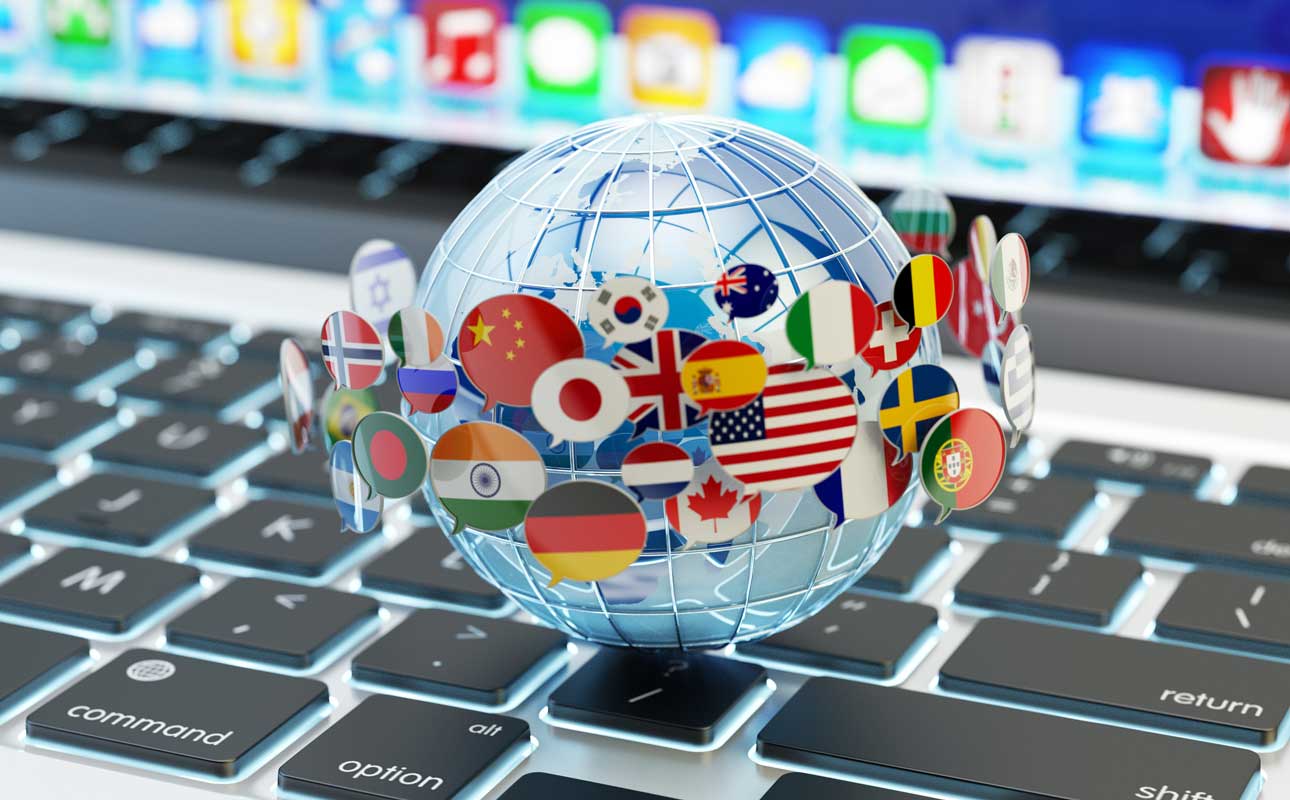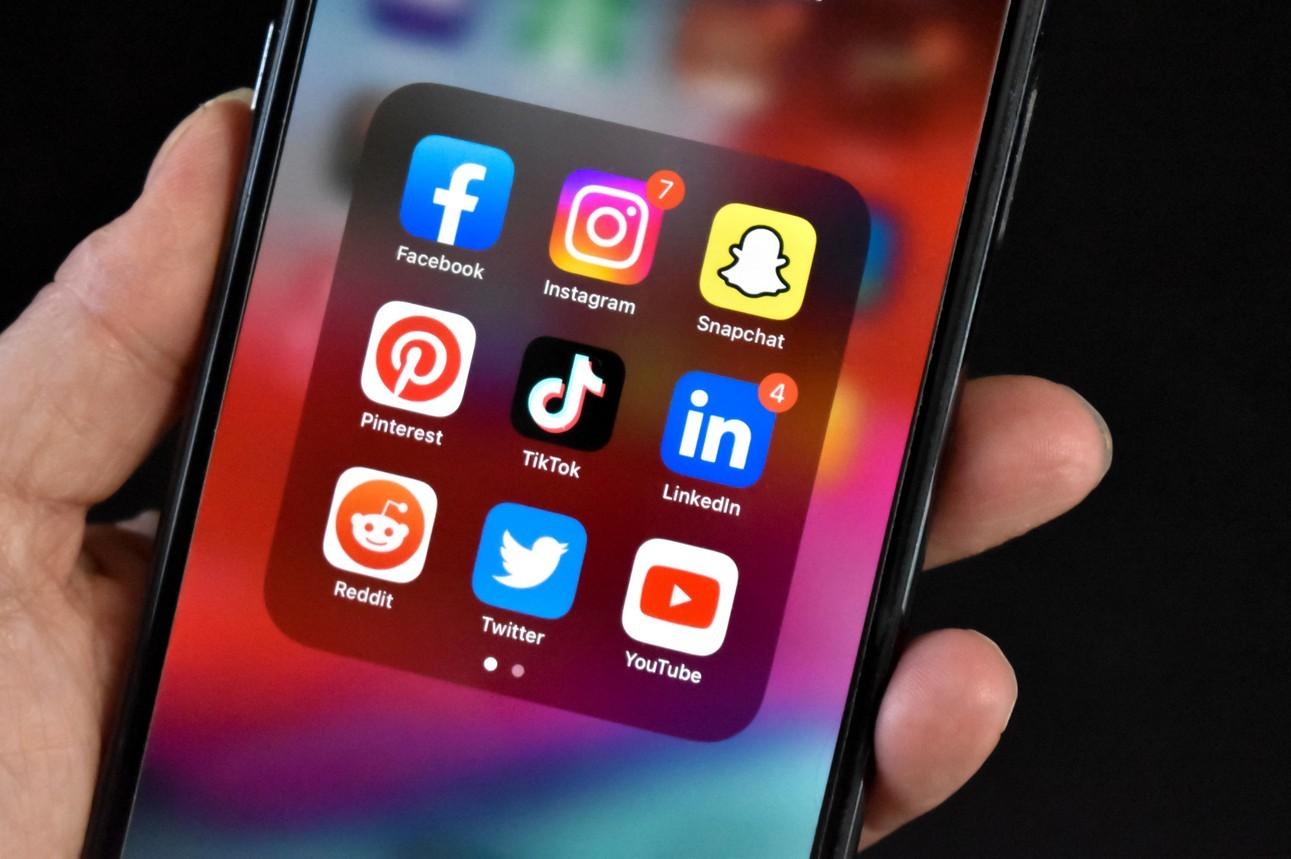Inquiring travelers want to know: What are the fastest internet speeds by country?

When you’re traveling or working remotely, your internet access could change dramatically anytime you cross a border. You could go from a country having some of the fastest Wi-Fi® speeds around to one with a sluggish connection and only a few hotspots.
Speed is affected by many factors, like a country’s tech policies and internet infrastructure, which make it hard to predict what the internet connection will be like in a new country.
Before you set off to explore the globe, prepare by taking a hard look at the numbers to see where you can get the fastest internet worldwide. We’ve sifted through some of the most recent data so you can see:
- Average download and upload speeds for broadband
- Average download and upload speeds for mobile internet
- Countries with the most broadband subscriptions per 100 people
- How the U.S. compares
- The top 10 countries that have dramatically upped their internet game
Ready to find out which countries have the fastest internet and most exciting stats? Let’s dive into the data.

Average broadband internet speeds by country
We’ll first focus on fixed broadband connections, which refer to high-speed internet access provided through cables, fiber optics or satellite, as opposed to mobile, or cellular, data. By looking at internet speed test results, we’re able to get an idea of the average download speeds people around the world are actually experiencing.
According to the June 2024 Speedtest Global Index prepared by Ookla1, the global average download speed is 93.93 megabits per second, which includes residential and commercial access. Meanwhile, the global average upload speed is 47.27 Mbps. But some countries are way ahead of this average. When it comes to download speeds, here are the 20 fastest countries:
| Rank | Country | Average download speeds | Average upload speeds |
|---|---|---|---|
| 1 | 285.02 | 240.67 | |
| 2 | United Arab Emirates | 283.34 | 134.95 |
| 3 | 271.05 | 188.60 | |
| 4 | 263.32 | 174.98 | |
| 5 | United States | 244.68 | 34.38 |
| 6 | 242.03 | 227.82 | |
| 7 | 232.30 | 170.01 | |
| 8 | 230.98 | 198.64 | |
| 9 | 224.82 | 132.82 | |
| 10 | 223.57 | 37.38 | |
| 11 | 211.56 | 152.16 | |
| 12 | 207.04 | 136.01 | |
| 13 | 202.74 | 93.31 | |
| 14 | 201.60 | 76.51 | |
| 15 | 193.54 | 97.01 | |
| 16 | 191.54 | 53.45 | |
| 17 | 190.32 | 94.41 | |
| 18 | 190.13 | 82.20 | |
| 19 | Liechtenstein | 187.79 | 147.74 |
| 20 | 180.90 | 40.81 |
To put these impressive speeds into perspective, let’s consider some everyday online activities.
If you were in Singapore, with an average download speed of 285.02 Mbps, you could download a single episode of a popular TV series in standard definition, around 280 Megabytes, in approximately 7 seconds. In contrast, if you were in Hungary with an average speed of 180.9 Mbps, the same download would take roughly 12 seconds. For something smaller, like a 10-slide PowerPoint presentation under 10 MB, it would take less than a second to download at any of the speeds above.
Number of fixed broadband subscriptions per 100 people for each country
Over the past few decades, the world has seen a dramatic rise in fixed broadband internet subscriptions. According to research by the World Bank, there were just 37,087,720 subscriptions globally in 1998. Fast forward to 2022 and that number skyrocketed to 1,410,925,800—an incredible growth of over 3,704 percent.2
However, these subscriptions aren’t evenly distributed across the globe. As of 2022, the world average is 18.4 subscriptions per 100 people. In some countries, the number of fixed broadband connections per 100 people is relatively low, which can translate into limited access and slower speeds as more users compete for bandwidth.
On the other hand, some nations have high subscription rates, suggesting fast and reliable internet access for their populations. Let’s take a look at the top 20 countries with the highest number of fixed broadband subscriptions per 100 people.
- Gibraltar: 70.2
- Monaco: 59.0
- Andorra: 51.1
- Switzerland: 49.5
- France: 49.4
- Liechtenstein: 48.8
- Cayman Islands: 47.0
- Norway: 45.8
- South Korea: 45.4
- Germany: 45.0
- Denmark: 44.8
- Netherlands: 44.5
- Portugal: 43.6
- Belgium: 43.5
- Canada: 43.1
- Malta: 43.0
- Greece: 42.8
- Saint Kitts and Nevis: 42.3
- United Kingdom: 41.5
- China: 41.4
How do international mobile speeds compare to broadband?
Beyond fixed broadband internet, there’s another way people frequently access the internet: using cellular data.
Broadband access and mobile connectivity are two different types of infrastructure, and deployment in each country isn’t always even or consistent. For example, there are nations that have ranked as one of the top 20 countries with the fastest mobile internet speeds—yet did not make the ranking for fastest broadband internet speeds (and vice versa).
So, what’s behind these differences?
In regions with vast remote or rural populations, such as parts of Asia and Africa, investing in mobile networks is often more practical and cost-effective than laying down cables for fixed broadband. As Ookla points out, “Cellular networks are critical to connecting individuals and businesses as internet access in Africa is predominantly mobile.”
History matters, as well. For instance, some Asian countries didn’t have a well-established fixed broadband infrastructure and instead became early adopters of mobile technology. They jumped straight into expanding mobile coverage and boosting speeds, leapfrogging older technologies to provide faster internet access for their populations.
Then there’s the factor of smartphone adoption. The Parliament, a European politics and policy magazine, reported that Europe had been considered a connectivity powerhouse in the days of 3G, but only 4 percent of the first 500 million 5G users came from the EU, while 71 percent of users came from China. Naturally, the slow adoption of new smartphones in Europe has affected the rollout of advanced mobile technologies. Meanwhile, North America and East Asia’s embrace of 5G devices supports the expansion of high-speed mobile internet.
Finally, we can’t leave out the role that competition and government initiatives play. In countries where telecommunications companies fiercely compete, internet speeds and coverage often increase rapidly as providers strive to outdo each other. Countries with fast-climbing internet speeds, like Malaysia, also often have supportive government policies and investments accelerating the development of their infrastructure, whether that be mobile, broadband or both.
What this means for travelers
So, what does this all mean for you as a traveler? In countries that have invested heavily in broadband wired internet access, you’ll typically get the fastest connections by using broadband hotspots at hotels, cafes and other physical access points.
Conversely, nations that prioritize wireless infrastructure make cellular data plans the best and easiest way for travelers to access the internet.
Mobile internet speeds by country
As of June 20241, the global average download speed for mobile internet is 56.43 Mbps and the global average upload speed is 11.53 Mbps. So, which countries have the fastest connection speeds for mobile internet? See the top 20 below.
| Rank | Country | Average download speeds | Average upload speeds |
|---|---|---|---|
| 1 | Qatar | 334.63 | 26.16 |
| 2 | United Arab Emirates | 323.61 | 25.02 |
| 3 | Kuwait | 226.56 | 22.73 |
| 4 | Norway | 145.19 | 20.65 |
| 5 | Denmark | 144.93 | 20.26 |
| 6 | South Korea | 139.04 | 16.92 |
| 7 | China | 135.71 | 24.59 |
| 8 | Saudi Arabia | 128.03 | 14.60 |
| 9 | Netherlands | 120.96 | 18.16 |
| 10 | Bahrain | 113.87 | 16.13 |
| 11 | United States | 113.10 | 8.97 |
| 12 | 107.03 | 9.21 | |
| 13 | Singapore | 104.98 | 17.86 |
| 14 | France | 103.40 | 8.62 |
| 15 | 103.23 | 14.81 | |
| 16 | 102.35 | 19.50 | |
| 17 | Lithuania | 100.38 | 15.07 |
| 18 | 100.08 | 16.99 | |
| 19 | 98.84 | 20.72 | |
| 20 | Croatia | 96.95 | 17.18 |
As you can see, the difference between mobile speeds and broadband internet speeds can vary significantly in some countries.
In United Arab Emirates, for example, the top speeds on mobile data average 323.61 Mbps, but the average broadband speeds are 283.34 Mbps. That means mobile speeds are 40.27 Mbps faster than fixed broadband internet speeds.
Another country that has a stark difference between mobile connectivity speeds and broadband internet access, but in the opposite direction, is Singapore. Its average broadband speeds are 285.02 Mbps, much higher than its mobile network speeds of 104.92 Mbps.
How do U.S. internet speeds compare?
As the Brookings Institute explained in 2020, “The internet is no longer ‘nice to have,’ it is critical…we have incorporated the internet as a critical part of our personal and professional lives. This is not going to change.” And it hasn’t. From doctor visits to making international calls, the internet can now handle it all, making connectivity more crucial than ever.
One recent report found that the average broadband data consumption reached a new milestone in 2023, hitting over 600 GB per month. And there’s no slowing down. By the end of 2024, average monthly usage is expected to reach or exceed 700 GB.
In terms of internet speeds, the U.S. ranks modestly among the top 20, with its broadband internet speeds faster than mobile.
- For broadband access, the U.S. is 14.5 percent slower than the fastest country. While Singapore’s download speeds are 285.02 Mbps, the U.S. is at 244.68 Mbps.
- For mobile access, the U.S. is 66 percent slower than the fastest country. Qatar has download speeds that are 334.63 Mbps, while the U.S. is at 113.10 Mbps.
The U.S. didn’t even make the top 20 ranking of countries by fixed broadband connections per 100 people. The U.S. stat is 37.6 fixed broadband connections per 100 people, which is 29th place on that list and nearly half of the number for Gibraltar—the number one country with 70.2.
Internet access and speed remain critical factors in how well Americans can stay connected and the types of online activities they can reasonably pursue. Increasingly, backup internet service has become an important utility to help people stay connected even during outages.
Which countries have the fastest-growing internet speeds?
When we consider global internet access, speeds are only part of the story. Some countries are investing in rapid growth and, as a result, are seeing their internet speeds jump dramatically in a short period of time. Here are some of the biggest increases in internet speeds, from the Fair Internet Report.3
Top 20 internet speed increases (2023–2024)
1. Eritrea: +2,320.94% (from 5.54 Mbps to 134 Mbps)
2. Guinea-Bissau: +136.09% (from 3.99 Mbps to 9.42 Mbps)
3. South Sudan: +122.04% (from 4.31 Mbps to 9.57 Mbps)
4. Qatar: +119.88% (from 61 Mbps to 135 Mbps)
5. Cameroon: +104.11% (from 6.08 Mbps to 12.41 Mbps)
6. Venezuela: +102.47% (from 16.22 Mbps to 32.84 Mbps)
7. Afghanistan: +82.67% (from 3.29 Mbps to 6.01 Mbps)
8. Chad: +80.46% (from 7.88 Mbps to 14.22 Mbps)
9. Algeria: +78.21% (from 8.95 Mbps to 15.95 Mbps)
10. Oman: +71.36% (from 43.71 Mbps to 74.9 Mbps)
11. Yemen: +70.64% (from 2.18 Mbps to 3.72 Mbps)
12. Zimbabwe: +70.58% (from 12.95 Mbps to 22.09 Mbps)
13. Israel: +69.96% (from 117.7 Mbps to 200.04 Mbps)
14. Kuwait: +67.45% (from 50.2 Mbps to 84.06 Mbps)
15. United Arab Emirates: +66.38% (from 71.08 Mbps to 118.26 Mbps)
16. Vanuatu: +65.92% (from 6.28 Mbps to 10.42 Mbps)
17. Democratic Republic of the Congo: +65.12% (from 10.81 Mbps to 17.85 Mbps)
18. Vietnam: +55.55% (from 34.22 Mbps to 53.23 Mbps)
19. Gabon: +52.75% (from 11.98 Mbps to 18.3 Mbps)
20. Myanmar: +52.52% (from 11.31 Mbps to 17.25 Mbps)
Accessing internet around the world
As we’ve seen, the speed and availability of internet connections can vary dramatically from country to country. Whether you’re exploring new destinations or trying to stay productive for work, having a good strategy for accessing the fastest Wi-Fi when you travel is essential.
However, finding high-speed internet can be a mixed bag. Not all public Wi-Fi is created equal, and there are two main types to know: secured and unsecured Wi-Fi.
Secured Wi-Fi networks typically require a password, account or even a fee, which act as a layer of protection against unauthorized access. Unsecured networks, on the other hand, are open to anyone, which can make them more vulnerable to security threats.
This distinction is crucial, especially if you plan on accessing sensitive information while on the go. A few business traveler tips to keep in mind include using a VPN or avoiding sensitive transactions when connected to public Wi-Fi. By staying informed and prepared, you can make the most of high-speed internet access while keeping your data safe, no matter where your travels take you.
And if you want to make international calls while traveling abroad, a VoIP phone service like Ooma that uses the internet, can help you stay connected.
_________________________
1: Data gathered from Ookla®, a leader in measuring global connectivity intelligence and helping telecommunications companies improve mobile networks
2: “Data Page: Landline Internet subscriptions”. Our World in Data (2024). Data adapted from International Telecommunication Union (via World Bank). Retrieved from https://ourworldindata.org/grapher/landline-internet-subscriptions
3: Fair Internet Report is a company that researches and aggregates telecom market data and provides consumer broadband analysis tools.



